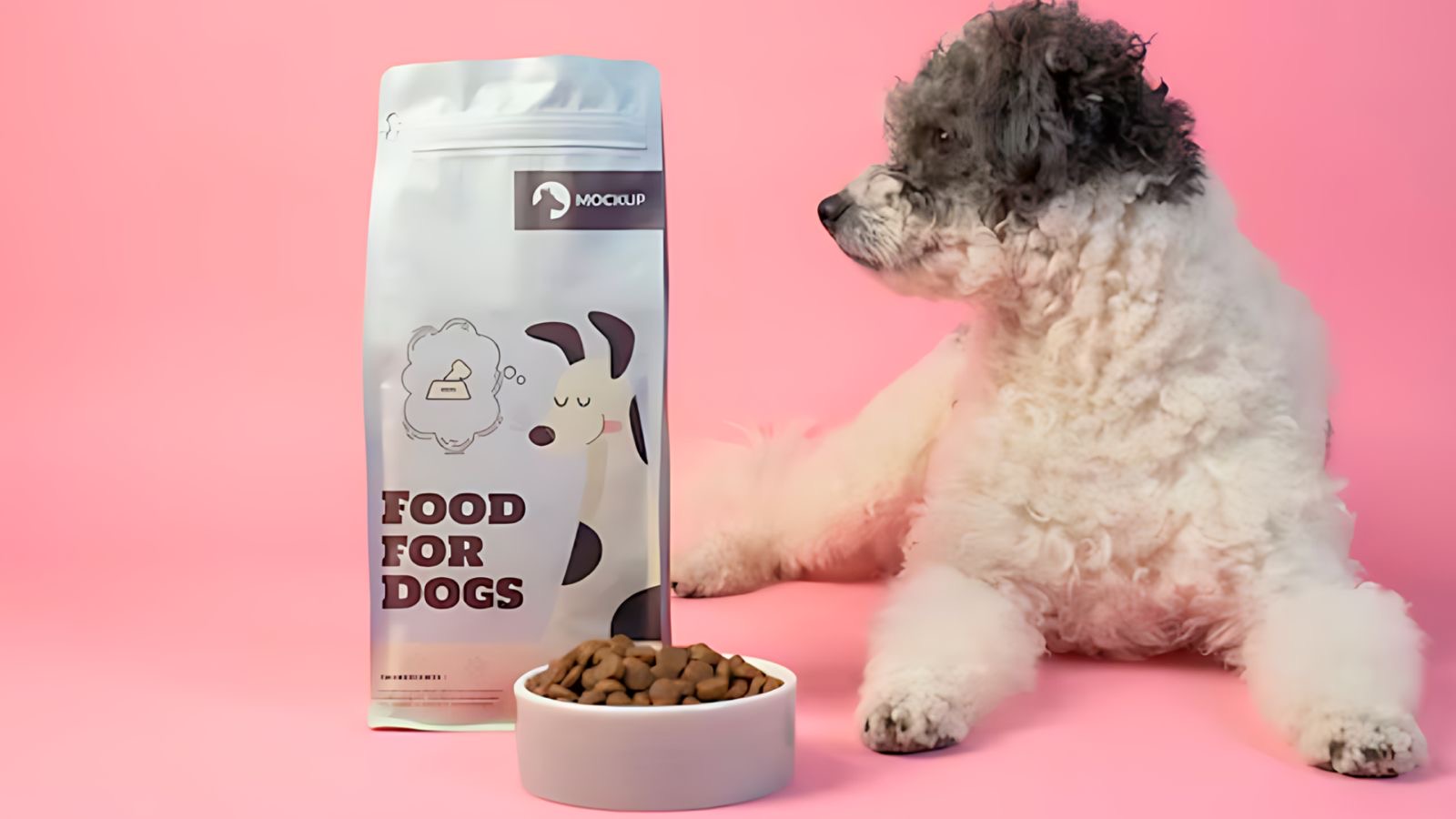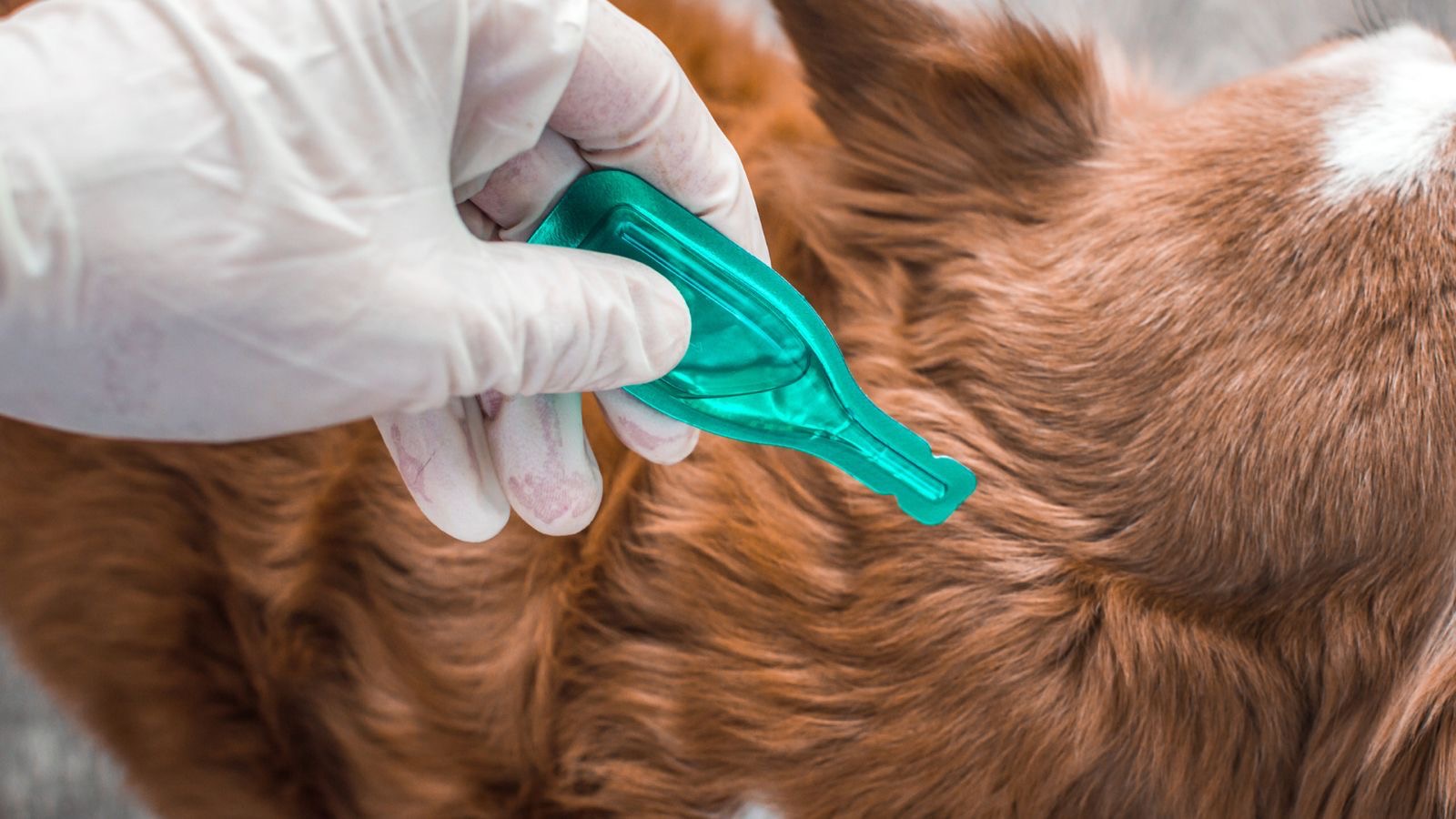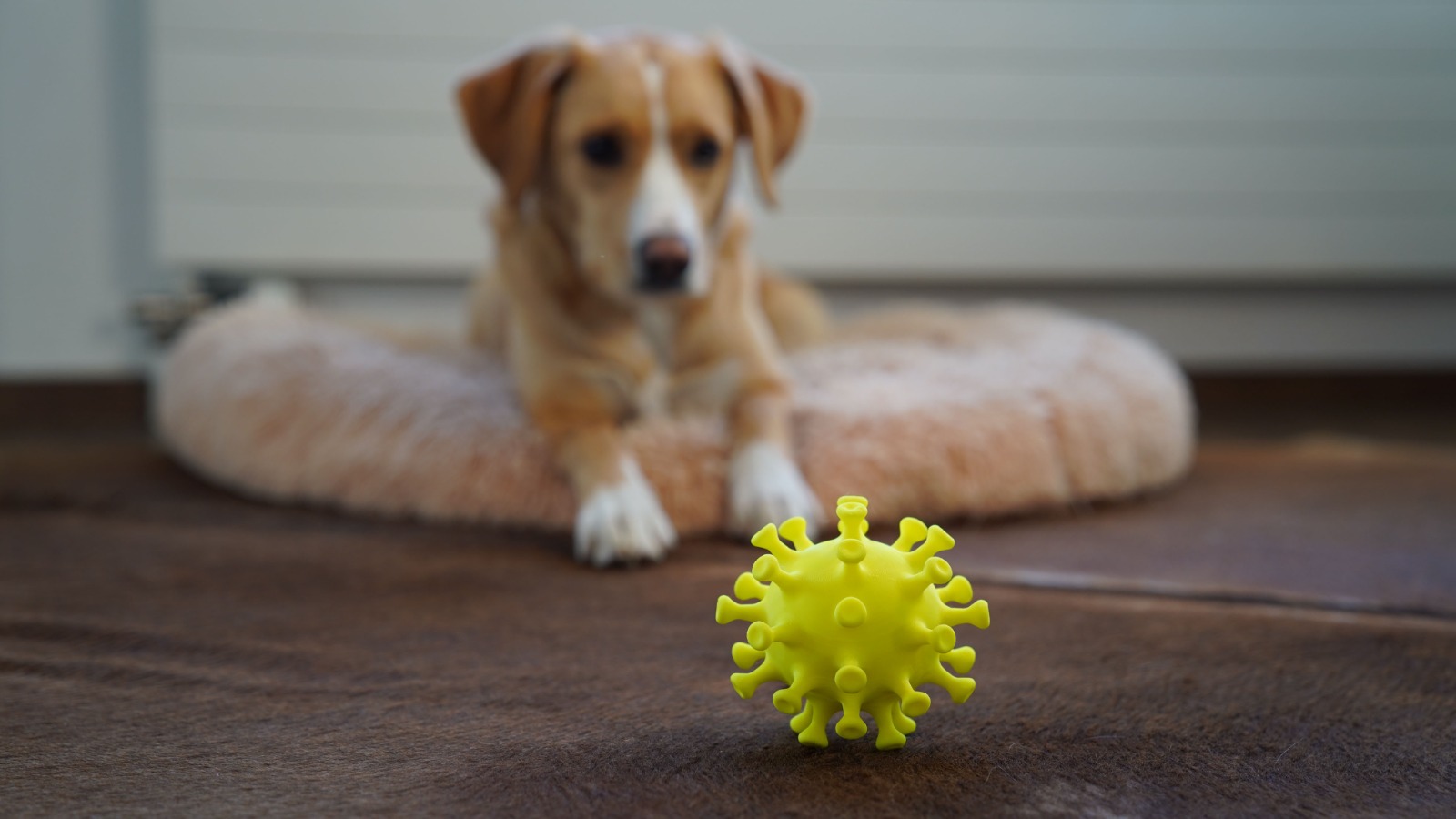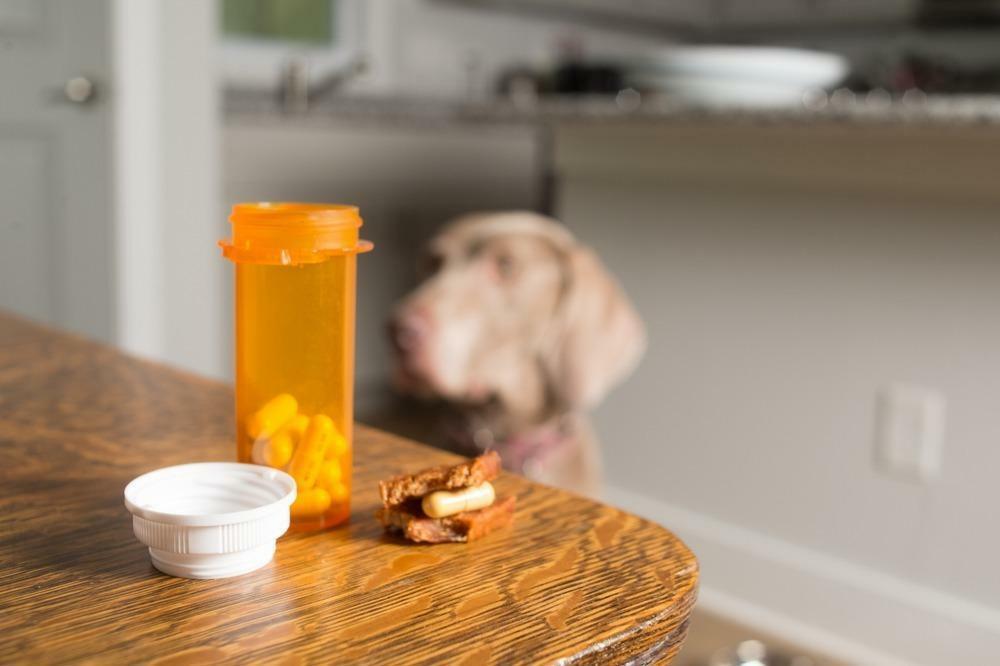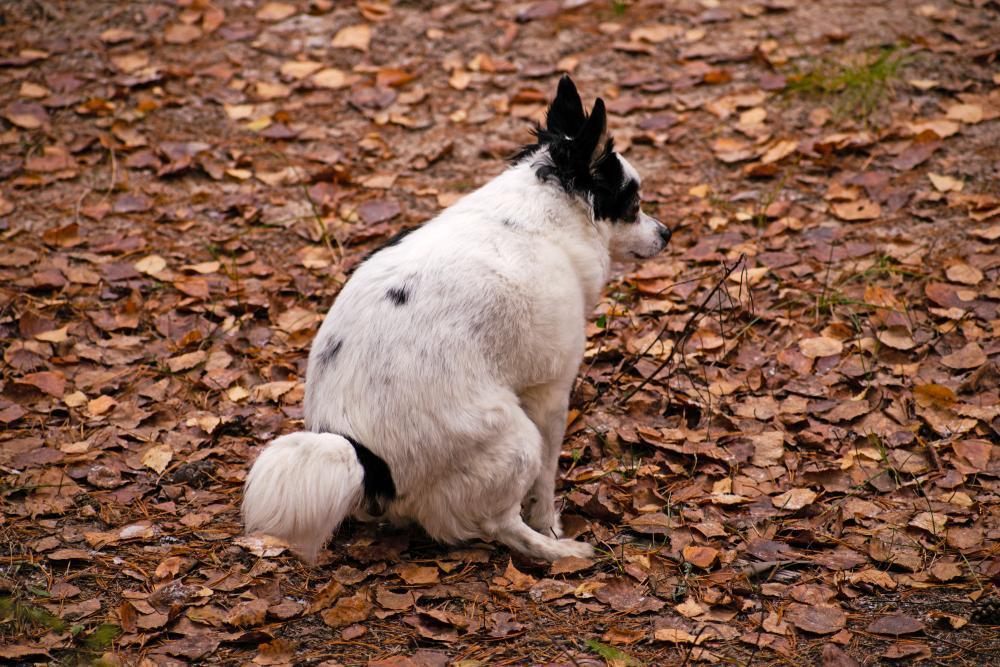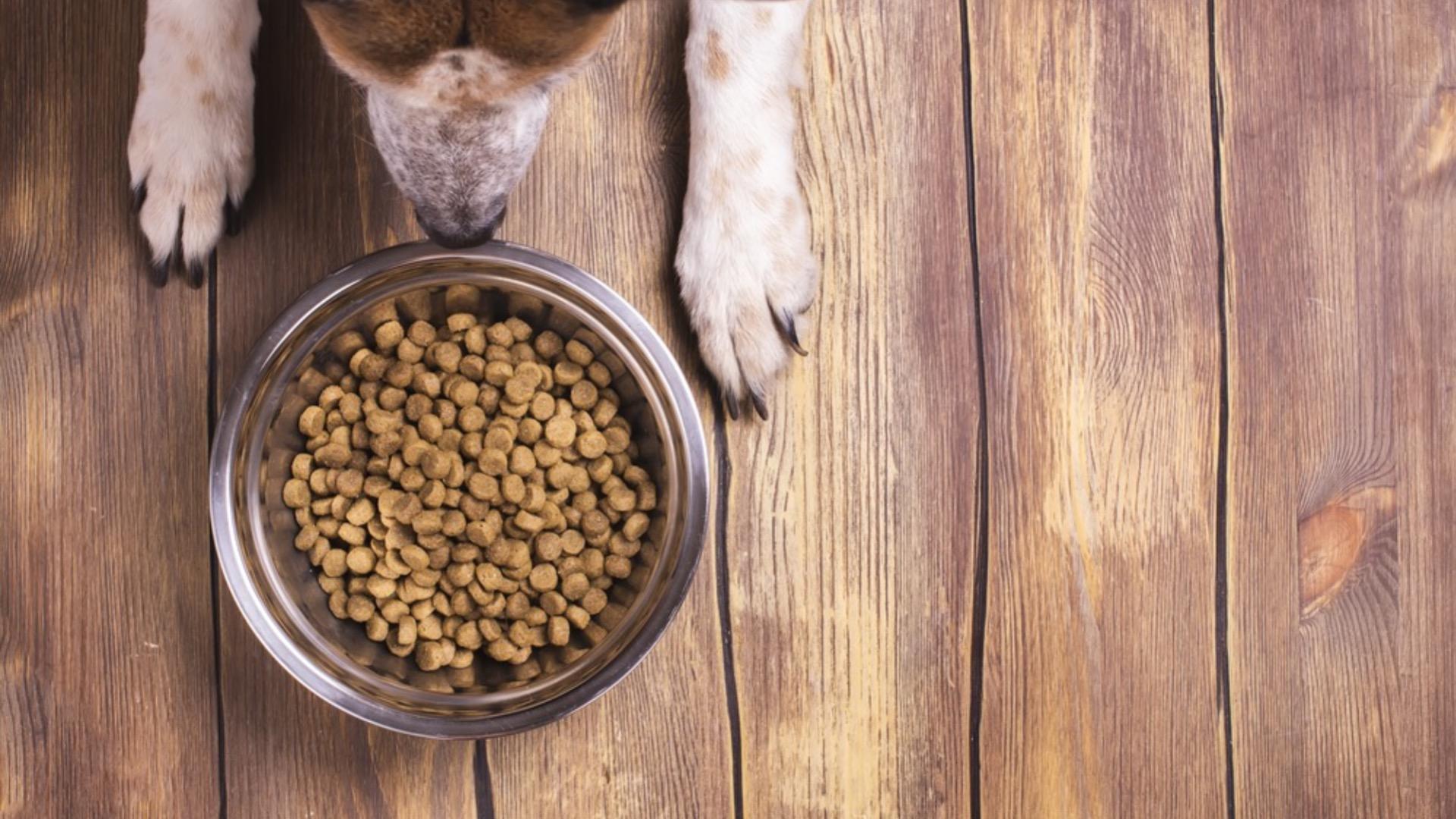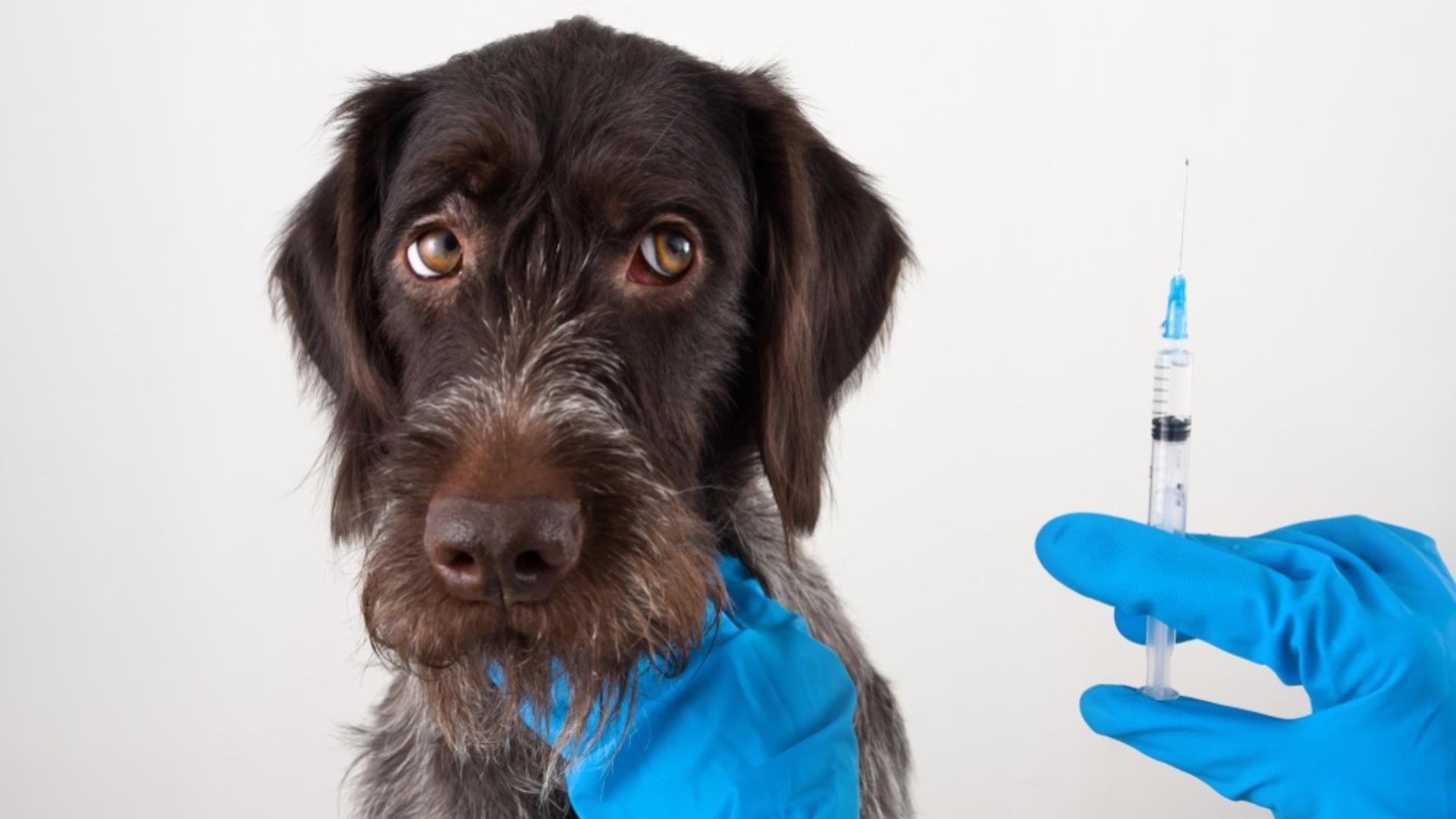Internal parasitic burdens can be quite worrisome for pet parents – they can affect both our pets, and us humans too, so they’re certainly something to be one step ahead of! Here at My pet Nutritionist, we aim to put your mind at ease, and to help you fully understand the ins and outs of parasites, giving you lots of options to help prevent and control infestations. You can read part 1 here!
Welcome to part 2 – Internal Parasites
When looking at internal parasites, there are various parts of the body targeted, which we need to look at, including the intestines, (where you can find nematodes, cestodes and protozoa), the lungs, and the heart. Some of these parasites can be life threatening, so it’s important to understand symptoms, prevention, and treatment options.
Intestinal Parasites
Intestinal parasites are usually referred to by pet owners, as ‘worms’. While some are worms, not all intestinal parasites are worms, nor are all worms equal! Nematodes differ from Cestodes, which differ from Protozoa, so we will delve deeper into each type here in this blog post.
Nematodes
Nematodes are from the phyla
Nematoda, and are your typical worm – they usually look similar to your garden earth worms (though are not actually related!); long and thin, with a squashable texture, and tapered ends. This, of course, is a generalisation, and there are various physical and mechanical differences between the different parasitic nematodes.
Here’s the strange thing about nematodes – they can be harmless, and actually beneficial, or they can be parasitic – it’s a very broad phyla! Beneficial nematodes are often used as a means of environmental flea, tick and ant control. These are sold online or from some environmental/gardening shops, and are mixed with water before being sprayed onto the affected area. The microscopic nematodes, now sprayed all over the area, target, and eat the larvae of their target species, which controls pest population!
Anyway, getting back to the parasitic kind! Let’s take a look at the intestinal nematodes pet owners may face during their time with pets.
Roundworms (Toxocara canis and Toxicaris leonina)
Roundworms, also known as Ascarid worms, are very easy to identify in their matured form. If a pet has a burden of these worms, which have matured from their larval stage, they will be very obviously present in the animal’s faeces, or vomit. They are white in colour, usually long (between 4 and 6 inches), thin, and curly – they are often expelled from the body in spirals.
The main method of transmission of roundworm to our pets, is through coming into contact with contaminated faeces. Those carrying roundworm, shed microscopic eggs into their faeces, leaving others to come into contact with it. Some insects and other animals, including cockroaches, earthworms, and birds can also carry roundworm eggs, which if eaten by your pet, can pass onto, and mature inside your pet. Puppies can also be born with roundworms, and shed live eggs in their faeces.
A question owners often ask, is if they can catch roundworms from their pets – and the answer is yes! Accidental oral contact with your pets faeces can pass roundworms on to you, if your pet is carrying roundworm eggs.
Symptoms you may see if your dog has a mature roundworm burden include:
- Diarrhoea
- Vomiting
- Changes to skin and coat
- Weight loss
- Bloated appearance to the stomach
- Visible worms in faeces and/or vomit
If your dog has recently contracted roundworm, and it is still in it’s larval stage, it’s unlikely there will be many symptoms, apart from perhaps some loose stools.
Findings Here
Hookworms (Uncinaria stenocephala and Ancylostoma caninum)
The next intestinal nematodes we will look at are Hookworms. As per their name, matured hookworms look like very small, but not microscopic, hooks. They are very thin, no longer than 2cm long, and are white in colour. They can be seen in faeces when they’re matured, but can be confused with undigested food particles, or even small pieces of string.
In order to stay inside the intestine, where they are fed and housed in those infected, they have small mouthparts which latch onto the intestine walls where they feed directly from blood vessels surrounding the intestine.
There are a few methods of transmission for hookworms in pets – pets can contract them through their mother’s milk as puppies or via the placenta before birth, and they can be orally ingested, or even be contracted through the skin. Hookworm larvae can lay dormant, and reactivate during pregnancy too, so it’s important to run regular faecal samples during pregnancy.
Can hookworms transmit to humans? Yes, and no. Larvae can be transmitted in unsanitary conditions, but are rarely transmitted as adults. There is one exception to this however! This may make you shudder, but matured Hookworms can work their way into the human body through the skin, most commonly through bare feet in unsanitary conditions where pets have shed larvae in their faeces.
While Hookworm infestations aren’t generally life threatening, they can cause anaemia if left untreated – this is more common in young animals than in adults though.
Some symptoms you may notice if your pet has Hookworms include:
- ‘downward dog’ position in dogs (showing gastrointestinal discomfort)
- Diarrhoea
- Vomiting
- Bloodied stools (due to blood loss when Hookworms detach from the gut lining, as they inject anticoagulants into the localised feeding area)
- Changes to skin and coat
- Anaemia, especially in young animals
- Physical development impairments in young pets
- Small string like worms visible in faeces
- Coughing in severe cases
If your dog has Hookworms in their larval stage, you may see diarrhoea, but may not see other symptoms, as eggs are microscopic.
Findings Here
Findings Here
Whipworms (Trichuris vulpis)
Whipworms, the third nematode sometimes found in our pets, get their name from their shape, much like the other nematodes discussed in this article. If you think of a whip, carried by movie heroes like Indiana Jones, and reduce it’s size to 0.5-5cm – you’ll have a Whipworm! They’re white in colour, and have one thicker end, tapering down to one thinner, curlier end. The thicker end embeds itself into the gut wall, where it sucks on your pet’s blood, much like the Hookworm.
The route of transmission of Whipworms, is much the same as that of Roundworms – predominantly through contact with faeces containing microscopic Whipworm eggs. Whipworm eggs, however, are extremely hardy. They can last in the environment for up to 5 years! Not only do they have such a longevity, they can also withstand extreme temperatures, making them a risk in almost all climates, and also adding the complication of having to clean your dog’s regular environment following a Whipworm burden, to avoid rec-contraction of them via eggs shed during the infestation.
Another unusual point to mention about Whipworm, is that dogs are more likely to contract it as the get older.
It is extremely rare for humans to contract Whipworm infestations from their pets with Whipworms, but it’s always good to keep up with routine sanitary processed within the home, and personal hygiene.
While many individuals are asymptomatic when they contract Whipworms, some symptoms you may notice if your pet has an active Whipworm infestation include:
- Bloodied diarrhoea
- Fatigue
- ‘Downward dog’ position, indicating gastrointestinal discomfort
- Dehydration
- Anaemia
- Weight loss
As with the other nematodes, individuals with Whipworms in their larval stage only, are unlikely to show any symptoms, bar perhaps a little diarrhoea.
Findings Here
Threadworms (Strongyloides stercoralis)
The last of the common parasitic nematodes, the Threadworm, is the smallest variety. Threadworms are also known as Pinworms, due to their size and shape. Readers may have sensed a theme between the names, and descriptions of the nematodes dogs can be affected by – and Threadworms are no different! If you imagine incredibly small pieces of white thread, you can picture a threadworm infestation. They’re short, and extremely thin, straight worms, and can be seen in the faeces if the burden is high.
Threadworms can be contracted via the mother’s milk as a young animal, through the environment after direct contact with egg-laden faecal matter, or like Hookworms, they can penetrate the skin. These worms are most common in puppies and kittens.
Threadworms can be passed from pet to human, through oral contact with infested faeces (directly, or indirectly), or even through contact with the pet’s skin or fur, however this is rare.
Symptoms you may encounter in a pet with a mature burden of Threadworms include:
- Malabsorption (which you can read more about here)
- Diarrhoea
- Coughing
Those with a burden in it’s larval stage are unlikely to show clinical symptoms.
Findings Here
Natural Prevention Options
There are a number of natural options pet owners may consider for worm prevention. It is best to approach worm prevention in layers – meaning multiple supplements and healthy extras for maximum potential benefit. Some great preventatives include:
- Crushed pumpkin seeds: crushing pumpkin seeds releases their active ingredient called cucurbitacin, which can also be found in grated cucumber. Studies show Cucurbitacin has anthelmintic properties (ability to treat and prevent parasitic burdens).
Findings Here
Findings Here
- Intestinal Tinctures such as Verm X Liquid, or 4 Seasons Intestinal Hygiene: these tinctures have gut cleansing ingredients, to be given as per instructions from the manufacturer; often three consecutive days, once a month. Giving the intestine a cleanse is so important to help rid it of any potentially latched worms.
- Furry chews: while these are not natural wormers, and have no anthelmintic properties on their own, the fur is a great prebiotic to aid gut health, and the roughage also helps to cleanse the gut as it sweeps through the digestive tract.
- Fresh Garlic: when crushed, and left for 15 minutes for the active ingredient, allicin, to develop, fed in the correct and safe amount, fresh garlic is an excellent addition to most dog’s regime due to its antiparasitic properties. It is important to be aware that it should not be given to puppies under 6 months of age, or any Japanese breed due to increased susceptibility to allicin poisoning.
Findings Here
Another incredibly important part of natural worm prevention, is performing regular wormcount screenings. This is probably the single most important part of going au-naturel. Faecal Egg Counts screen for intestinal worms, including Nematodes and Cestodes. Some companies also routinely test for protozoa in standard Faecal Egg Counts. These egg counts should be carried out every 12 weeks.
Wormcounts are very easy to carry out too – simply order a testing kit from your chosen company, collect a poop sample, and return the sample to the company, who’s laboratory analysts will look at the sample, and return the results to you via email, usually within 48 hours of receiving the sample. You can then treat as necessary.
Should your dog receive a positive wormcount, low to medium burdens may be treatable using Grapefruit Seed Extract, however we always recommend speaking with your veterinarian, especially if a high burden is recorded.
Cestodes
Moving onto cestodes – these differ from nematodes, as the worms are a completely different shape. Where nematodes are one long segment, cestodes are tape-like, and are very much segmented. Let’s take a look at the one cestode sometimes seen in pets.
Tapeworms (Dipylidium caninum, Taenia pisiformis, Echinococcus multiocularis, Mesocestoides, Echinococcus granulosus)
Tapeworms are the cestode commonly found in pets. These can be quite nasty parasites, as they continue to grow, as segments are added on – they can end up a foot in length, and cause quite a lot of stress on the gut, and consequently on the body in general.
When tapeworm is present segments shed into faeces, which can be seen with the naked eye, and look almost like flat grains of rice. They may also be seen around the anus, and on bedding and soft furnishings where the dog has been resting.
Tapeworms latch onto the small intestine wall using tiny mouthparts, which anchors them into the intestine and allows them to grow. Tapeworm eggs in faeces can ‘hatch’ to produce a further 20 tapeworms – quite staggering!
Tapeworms are contracted much differently than the nematodes we discussed in this article. Rather than coming into direct contact with eggs, a dog or cat has to ingest an infested flea. Flea larvae ingest Tapeworm eggs, and host the egg as the flea grows. While the flea matures, so does the Tapeworm egg. When the dog ingests a flea as a reaction to a flea bite, the digestive tract digests the flea, leaving the egg to mature into a juvenile worm in the intestine. This is the only system of transmission of Tapeworms in pets.
In good news, humans are not able to get tapeworm from their pets! Isn’t that a sigh of relief?
In dogs with a mature tapeworm, you may see these symptoms:
- Changes in behaviour
- Lowered appetite
- Physical development difficulties
- Poor coat and skin
- Intestinal blockages
- Diarrhoea
- Vomiting
- Visible segments in faeces or vomit
- Anaemia
Findings Here
Natural Prevention Options for Tapeworms
The same protocols as for parasitic nematodes can be followed, and beneficial to prevent tapeworms, but there is an additional means one may consider.
- Pomegranate: pomegranate contains active compounds which help to detach worms from the intestinal walls, and successfully expel them through the colon, and out in faeces.
Findings Here
Protozoan Parasites
Next we will look at the last type of intestinal parasites, the Protozoan parasites. The two most common protozoa found in pets, are Giardia, and Coccidia. We have seen an increased number of Giardia cases in the last few years, possibly due to the number of litters being produced to keep up with demand since the global Pandemic.
Protozoa are not worms. Worms are made up of many cells, just like us, your pets, wildlife etc. Protozoa are single celled organisms. They’re microscopic, so not visible to the naked eye. They can be free-living, as a part of a larger community in the wild, or can be parasitic – which is where the issues arise within our pets. Let’s take a deeper look at the Protozoan parasites!
Giardia
Giardia has two stages – the trophozite stage, which resides in the gut of it’s host, and the cystic stage. The cystic stage sheds into faeces, as it lines the gut wall with numerous cysts. The infection of cysts on the gut wall is known as Giardiasis. Giardiasis causes major gut damage, which can contribute to various health conditions, including intolerances and itching. Due to the gastrointestinal damage caused by giardiasis, here at My Pet Nutritionist, we find these patients may not be able to tolerate a raw diet, and may need to switch to a cooked food diet. We also see many of these patients struggling to tolerate slippery elm, opting for a pure marshmallow root supplement for gut healing instead – however this is anecdotal evidence, purely from our experience working closely with owners of dogs with Giardia.
Giardia cysts can survive in the environment for many months, and they particularly like damp areas. As it lives in the environment for so long, it is very easy to reinfect the individual, and also pass it on to other pets. In order to contract the parasite, your pet needs to ingest a cyst, which can be done if the pet sniffs and licks infected faeces, or if the pet walks through an infected area, then licks their paw. Once ingested, the giardia returns to the trophozite stage, which feeds on the gut lining, before some turn into cysts, and the cycle repeats.
It is extremely rare for humans to contract Giardia from their pets, because we tend to get a different species of Giardia to our pets.
Symptoms you may see if your pet has Giardia include:
- Flatulence
- Diarrhoea
- ‘Downward dog’ position, indicating gastrointestinal discomfort
- Vomiting
- Weight loss
- Lack of appetite
When battling Giardia, it is extremely important to clean your property like you’ve never cleaned before. You will need to steam clean flooring every day, wash all bedding and soft furnishings daily, wash toys every other day, wash bowls after every use, try to limit garden usage to a small space which you can cordon off for a few months, and wipe your pet’s anal area after every poo.
Some cases, if caught early on, may be able to be treated using Grapefruit Seed Extract, however many require prescription veterinary anthelmintic products, so we always recommend seeking veterinary attention.
Findings Here
Coccidia
Coccidia is the other Protozoan parasite sometimes found in pets. It is a single celled, spore forming parasite, which infects the gut. Much like giardia, it has two forms, the former being Oocysts, and the latter being the mature cyst stage. Some of the spores will transform into cysts, covering the gut wall – this infection is called Coccidiosis.
Coccidia is very similar to Giardia. It can live in the environment for quite some time, and is contracted orally when the pet comes into contact with a cyst in the environment. Coccidia is most commonly found in puppies and kittens, but can be seen in adults too.
Symptoms you may encounter in a pet with Coccidia include:
- Severe diarrhoea
- Dehydration
- Vomiting
- ‘Downward dog’ position, indicating gastrointestinal discomfort
- Death, in severe cases
Just like battling Giardia, cleaning is of utmost importance, as well as working closely with your vet to work out the best treatment plan for your pet.
Findings Here
Lungworm
The next stop in our Ultimate Guide on Parasites are the lungworms! These are more parasitic nematodes which start life in the gut, where eggs mature. Once eggs have matured into adult worms, they travel into the lungs. Lungworm can be fatal if not treated in a timely manner, so it is incredibly important to keep an eye on your pets, and carry out regular lungworm counts. There are four main types of lung worm; these are:
- Fox Lungworm (Crenosoma vulpis)
- Canine Lungworm (Oslerus osleri, Filaroides hirthi)
- French Heartworm (Angiostrongylus vasorum)
- Hedgehog Lungworm (Oeucoleus aerophilus)
You may notice one of the listed lungworms, is called ‘French Heartworm’ – this name is as misleading as it seems, as it’s actually a lungworm, not strictly a heart worm. It was discovered in the 1960s in the South of France, and was found to be settling in the right heart and pulmonary arteries, hence the term ‘French Heartworm’.
Findings Here
Lungworms of all species listed, are transmitted through the ingestion of slugs or snails, as well as direct oral contact with the slime these creatures produce, and leave behind in trails. It is important to know, that not all snails and slugs carry lungworm larvae.
Lungworms are not zoonotic, which means they cannot be passed onto us humans.
So, what symptoms could you expect from a dog with a burden of mature lungworms? Some of the main symptoms include:
- Rapid weight loss
- Lack of appetite
- Lethargy
- Coughing
- Raspy breathing
- Vomiting
- Diarrhoea
- Difficulty in blood clotting (cuts will bleed for longer)
- Internal haemorrhages
As mentioned, lungworm starts life as eggs in the gut, these can be seen in faecal samples. This wormcount is a separate worm count from intestinal parasites, and the sample is collected over a course of three days. These wormcounts should be carried out every 6-8 weeks, which is more frequent than intestinal wormcounts.
When treating these worms, it is imperative that you consult with your veterinarian, to discuss a suitable treatment plan for your individual pet.
Findings Here
Heartworm (Dirofilaria immitis)
This section is for our overseas readers! Here in the UK, we do not have heartworm, as we don’t have the climate for it to thrive and spread.
In many countries, particularly those with warmer climates, heartworm is rife, and can be fatal if contracted, and left untreated. Heartworms grow up to 12 inches long, and are thin, pale coloured worms.
The conventional treatment in itself is very harsh, and the recovery is slow, but needed should heartworms mature and infest the heart.
Heartworm is transmitted by mosquitoes. Not all mosquitoes carry heartworm larvae, but those who do, will bite the pet, and deposit the heartworm in its larval form, into the blood vessels. Once inside the host’s blood vessels, the larvae mature into adult heartworms, before making their way to the blood vessels serving the heart and lungs. Heartworms then enter the heart in the most severe cases, which causes inflammation in the heart and lungs – inflammation in heart, a vital organ, puts a huge amount of pressure on the body, and doesn’t have a very good prognosis without extremely harsh treatment plans.
The best way to help prevent heartworm infestations, is to prevent mosquitoes using the layered approach to external pest control described in
Part 1.
As heartworms do not spend any stage of their life in the gut, a faecal wormcount is not available. The recommended routine test for heartworms is a 6 monthly blood test, performed by your veterinarian.
Should your pet be diagnosed with heartworms, it is important to work closely with your vet to work out a suitable treatment plan for your pet, because left untreated, death is very much possible.
Findings Here
A Bit About Wormers
Conventional worm treatments can be extremely harsh on the gut, as well as having potential to cause seizures, and other conditions such as ataxia and itching, much like the flea treatments in
Part 1. With regards to being harsh on the gut, these products tend to affect the previously healthy microbiome of the gut itself, leaving the host vulnerable to leaky gut, gut dysbiosis, and consequently, intolerances and itching.
Just like conventional flea treatments, wormers do not prevent – they merely treat current infestations.
As we have the option to use wormcounts for intestinal parasites and lungworm, routine treatments often prescribed, are not necessarily needed. By wormcounting regularly, you may be able to avoid having to use these potentially harmful products.
With that said, worm infestations can be life threatening if left untreated for lengthy amounts of time, so in some cases, these products may be required. Here’s some tips to consider in the eventuality that you need to use any of these prescription products:
- Heal the gut using mucilage herbs such as marshmallow root, or slippery elm. Take into consideration the type of parasite your dog has had, as you will have read in this article, some parasites cause pets to not tolerate slippery elm.
- Help the gut flourish again with soil based probiotics
- Feed a fresh diet, supplemented with plenty of omega 3s, and antioxidants to help reduce the affect of gut inflammation.
- Detoxify the liver with milk thistle, or contact a homeopath for a liver detoxification remedy.
We hope this blog post has helped to put your mind at ease when it comes to parasites on or in your pet, and has given you some insight into preventing them, and ridding the body of them. If you would like further guidance on improving your dog or cat’s lifestyle, our Optimise packages are perfect for you, however if your dog or cat has ongoing health concerns, and you’d like guidance on improving their diet and lifestyle, pick our Personalise package!
Team MPN x 
